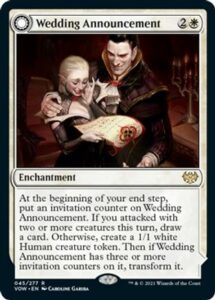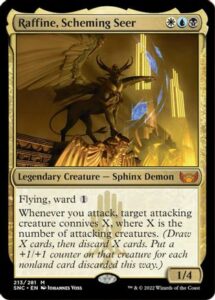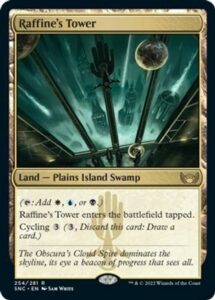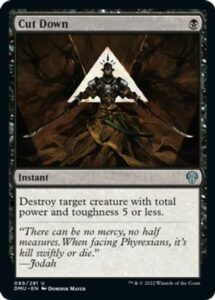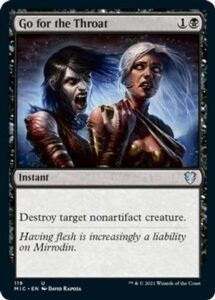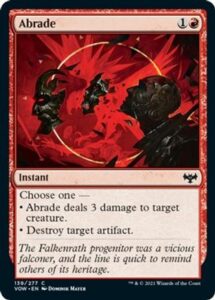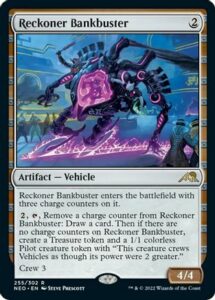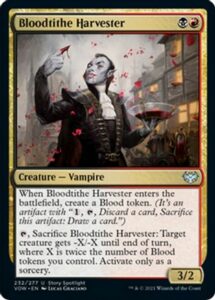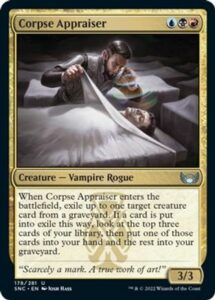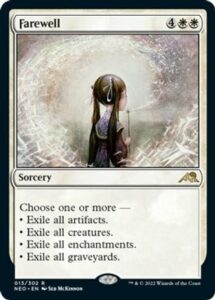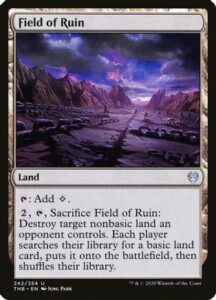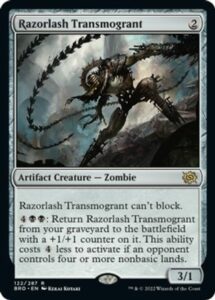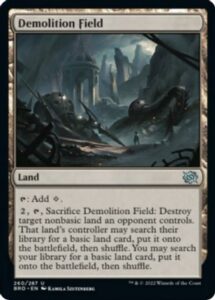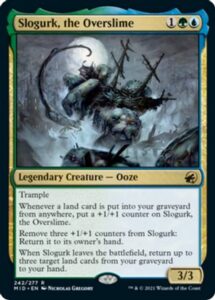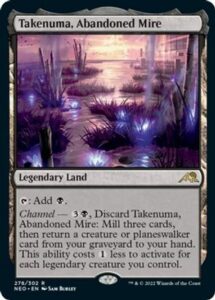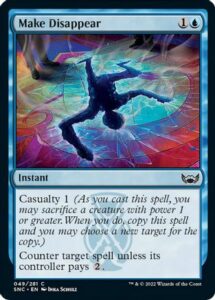A Look at Regional Championship Results
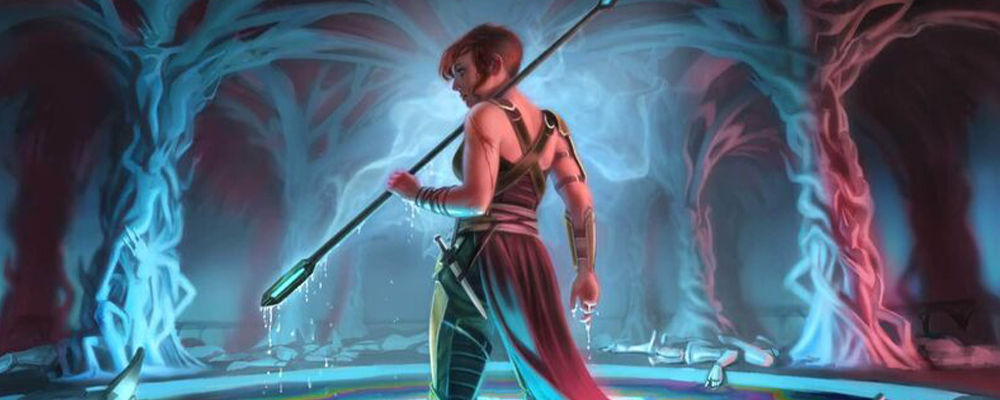
I spent this past weekend glued to my screen watching and tracking various Standard events. I was feeling a bit exhausted and under the weather, so I skipped the cool online events but wanted to keep my finger on the metagame’s pulse by watching what was happening.
The biggest, and in my eyes, the most important event was in Naples. Here’s the breakout deck, Esper Legends.
Esper Legends by Thoralf Severin

While not completely off the radar, Esper Legends came out of nowhere to put on a dominating performance. The key? Adding Wedding Announcement to a Thalia deck.
Wedding Announcement puts in work against Grixis, especially when drawn in multiples. Thalia taxes it, but it also taxes a majority of the deck by making the opponent sequence awkwardly, especially when Grixis is on the draw.
This build, played by four great players, really put on a show and put up incredible results.
Grixis is public enemy number one, and when you look at typical Grixis lists going into this event, the scarcity of one-mana cards is the biggest thing you’ll notice. Esper Legends can punish that by playing Skrelv and Thalia, which makes it a nightmare always playing one or two turns behind. To top that off, Raffine and Sheoldred end the game quickly.
The best thing about this Esper Legends deck is it plays zero Raffine’s Tower. Plaza of Heroes, one of the sneaky best cards in the format, is doing heavy lifting. With a huge majority of good cards being Legends in Standard right now, Plaza of Heroes is amazing at letting you curve out smoothly and play ahead, even on the draw.
While Esper Legends was a small portion of metagames this past weekend, I expect it to be represented in similar numbers to Grixis moving forward. It has a solid proactive game plan, tons of customization within its sideboard, and few flex spots.
While Esper Legends was the breakout deck of the RC in Naples, it didn’t win. It was Grixis. We all knew Grixis would continue to be a menace, but there are many different ways to build it, and it can morph what it wants to fight.
Michael Rohrback’s winning list was a near-perfect build to fight against aggressive decks.

This list came packed with tons of cheap removal. Michael said in his winner interview that he came prepared to fight the Arena metagame, which was lots of aggro, like Mono Red, Esper Legends, and Toxic. He brought all four copies of Cut Downs and Go for the Throats and left most of his Abrades at home.
This deck looks ripe to fight the enemy but seems it would struggle in mirrors. I looked into his match-ups, and Michael beat everything before sweeping three Esper Legends decks in T8.
My guess is that Michael played extremely well and drew well in mirrors. He can customize his deck after game one to look much like his opponent’s, so while he was likely disadvantaged in mirrors in game one with tons of removal where others had Bankbusters, the sample of game ones is small enough that it’s possible to overcome a small game-one-deck disadvantage with great play and sideboard plans. I love the Graveyard Trespasser’s here. It’s a card we haven’t seen a lot of in Standard recently, but it plays nicely in mirrors and can do some work against various Atraxa builds.
I noticed Michael played 25 lands, one or two less than usual, which makes a lot of sense when you’re playing a build that’s more one-for-one reactive. I still wouldn’t be comfortable with less than 26, though.
The question moving forward is, is this the way people will build Grixis? Will Grixis lose enough metashares to new decks like Toxic, Esper Legends, and others to stop worrying about beating itself?
I don’t think so, as people will play what they’re comfortable with and rely on Bloodtithe Harvester, Fable of the Mirror Breaker, and Corpse Appraiser to do the heavy lifting. The rest will be customization from player to player, which will put someone trying to beat everything in a tough spot because Grixis is every deck’s best, and worst, match-up. It depends on the build you’re playing against and who’s the pilot.
The next event I kept an eye on was the RC in Canada. The one thing I noticed when looking over the metagame was that unlike other RCs, Vancouver had an over 15% metagame share of Mono Blue. This seems like a lot of good players decided that they wanted to beat midrange decks and wildly underestimated the presence of aggro. While Mono U is a playable deck in specific metagames, it doesn’t prey heavily on decks like Grixis. It may be a slight favorite, but in the past when blue tempo decks like this have been good, it’s because its worst match-ups played close, and its best matchups were extremely good. One reason we played a Mono U tempo deck at Worlds was that it seemed like it was attacking all the decks well, and its worst match-ups weren’t too bad. It was a small tournament with a fairly predictable metagame.
In this event, the field is much more open and unpredictable, and the deck has too many mid match-ups. While I’m not an expert on the deck, it always seemed too vulnerable and more of a solid budget option than an actually good deck.
Wondering if I was incorrect, I took a look at the event after the fact to see how Mono U did overall. I looked at the first page of results which had 25 players, and none of them were Mono U, so I was pretty happy my read was correct. It’s possible people didn’t want to invest resources to get those decks, as something like Sheoldred is expensive these days and basically required to play Standard. In which case, yeah, Mono U is a solid budget option.
Looking at the tournament finals, we see Mono White took the trophy home in the hands of William La Hay.
Mono White Midrange by William La Hay

This build is also unique by focusing on Farewell and removing Ossification from the main deck entirely. The plan against aggressive decks is likely focusing on bridging the game toward casting Farewell and taking over from there. Another interesting note is that this deck played the maximum number of both Field of Ruin and Demolition Field, thus focusing on punishing mana bases that opted to not play many basics. I believe this will have a ripple effect and people will include more basics in their list to not get Strip Mined every turn.
Between 8x Field of Ruins decks and Razorlash Transmogrant, the more basics you can play the better. It creates tension with the channel lands and makes you re-evaluate your priorities, which is sort-of a cool deck-building dilemma.
The deck that lost to Mono W is one that has me excited. Michael Van Vaals, a player I know from playing deep in a GP years ago and from seeing his name over and over since that time. This man is a stone cold killer.
Michael played a deck I was incredibly impressed with and wrote about after Worlds. It’s a deck I’ve been trying to get to work. I refer to the deck as Slogaak, but the deck plays similarly to Esper Legends. It adds a color for the namesake card, Slogurk, The Overslime. The deck can curve out similarly to Esper Legends, but if the opponent spends too much time and resources trying to keep pace in the early and mid game, Slogurk plus Takenuma and Otawara loops can put almost any deck out of reach.
Four-Color Legends by Michael Van Vaals

This is a deck I like more in theory than practice, but I may revisit it given this result. I’m most surprised by seeing zero copies of Skrelv in the 75. I could see a low number because it’s important to spread out the names of your Legends since they make your channel lands cheaper. However, seeing zero is surprising because you can find a spot to cast it and it protects your busted creatures. It’s a good call if you expect to race your opponents. I’d try to cut a card or two and add two copies, likely over a card like Ao that is expensive for this type of deck.
In testing for Worlds, Slogurk was solid-to-good against Grixis, but it was getting punished by Esper repeatedly to the point we put it down expecting Esper to be the most-played deck. With Esper Legends becoming a bigger share, if that is still the case, Slogurk may be a one-and-done deal. I’m happy to see it perform since the deck is one of my favorite decks that I never got the pleasure of playing in an event. If GPs or lower stakes tournaments existed, I would have given it a test run because I enjoy the deck a lot.
There were more RCs this weekend, and the only surprising deck I saw was this Azorious Soliders deck winning a smaller RC in Taiwan.
Azorious Soldier by Rocky Lin:
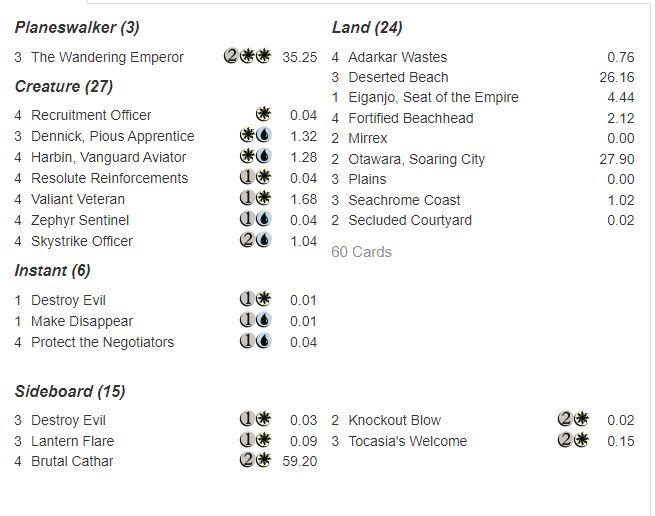
This deck is unique in that it doesn’t play Thalia, a card I thought was a staple in these Azorius decks. Instead, it’s more of a slash-tempo style with cards like Resolute Reinforcements and Zephyr Sentinel to go with a counterspell package of Protect the Negotiators and Make Disappear.
This list looks to be a much better tempo deck than Mono U because it can outrace other aggro decks but also play the flash-tempo game against decks like Grixis. While this deck may be a good metacall, it will depend if we see people showing up with four main deck Cut Downs in decks like Grixis, or if we see Grixis players still trying to beat each other rather than fight the rest of the field.
This was a small event with only 60 players, so I don’t put as much weight into it as larger events with more rounds, but it’s interesting to see such a huge spread of decks doing well in a bunch of different RCs.
If I had to play this weekend, I’d likely play a Grixis deck similar to the EU winners list. Esper Legends being the flavor of the week will mean people are more likely to pick it up, sick of losing with random Grixis lists themselves, and it’s a good time to attack that part of the metagame.
I have a few weeks before San Diego, and while I was bullish on going last week, there’s an outside chance I sit it out. I have very much enjoyed spending time with my family this past weekend and not worrying about playing MTG. I’m going to prepare as if I’m going, but if I feel like I’m flying all the way across the country and spending time and money just to flip coins playing a boring stock deck with no edge, I’ll likely just stay home. If I feel confident, I’ll show up and prepare as if that is the case.
This Standard format is healthy and has a good amount of churn, but for a professional player looking for edges, a healthy format isn’t always the best. Either way, I’m looking forward to preparing with friends and setting us up to have a great run at the event. Hope to see you there!





